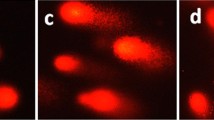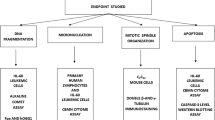Abstract
Cytotoxicity, reduction of macromolecule synthesis and cell cycle perturbations by two novel 3-(2-chloroethyl)-tetrazepinones, PYRCL and QUINCL were compared with those produced by the structurally related 3-(2-chloroethyl)-tetrazinone, mitozolomide, in the OVCAR-3 cell line. Methods: Macromolecule synthesis was determined by incorporation of 3H-thymidine, 3H-uridine and 3H-leucine into acid-precipitable fractions of OVCAR-3 cell extracts. Maxam-Gilbert sequencing was used to compare the DNA alkylating sites induced by the tetrazepinones, with those created by mitozolomide. Alkaline sucrose-density sedimentation was employed to detect genomic DNA damage. Also, the effects of the tetrazepinones on the cell cycle were determined by univariate flow cytometry. Results: At 3 h post-treatment, mitozolomide appeared as a selective inhibitor of DNA synthesis, while both tetrazepinones inhibited the synthesis of all three macromolecules. At 24 h post-treatment, the inhibition of DNA synthesis was observed to increase in cells treated with mitozolomide, while it decreased in those previously exposed to the tetrazepinones. Also at 24 h post-treatment, mitozolomide induced accumulation of cells in S(late)/G2M at low concentrations and in S-middle at high concentrations. In contrast, at the same recovery time, cells treated with the tetrazepinones accumulated specifically in G2M, the strength of the block being dose-dependent. At an equimolar concentration, the tetrazepinones induced weaker guanine N-7 alkylation than mitozolomide. By 24 h after treatment, cells exposed to the tetrazepinones showed significantly greater DNA fragmentation than those previously treated with mitozolomide. Conclusion: In summary, based on (a) their effects on DNA, RNA, protein synthesis and on the cell cycle, (b) their alkylating power and (c) their interactions with DNA, the 3-(2-chloroethyl)tetrazepinones appeared to kill tumor cells by a novel mechanism which may significantly differ from that of their 3-(2-chloroethyl)-tetrazinone counterpart, mitozolomide.
Similar content being viewed by others
Author information
Authors and Affiliations
Additional information
Received: 22 July 1997 / Accepted: 13 October 1997
Rights and permissions
About this article
Cite this article
Jean-Claude, B., Mustafa, A., Damian, Z. et al. Comparative studies between the effects of mitozolomide and two novel tetrazepinones PYRCL and QUINCL on NIH:OVCAR-3 cells. Cancer Chemother Pharmacol 42, 59–67 (1998). https://doi.org/10.1007/s002800050785
Issue Date:
DOI: https://doi.org/10.1007/s002800050785




